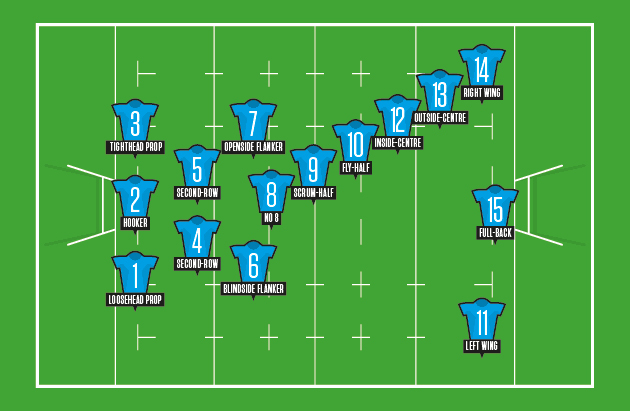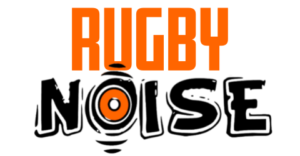Like in any other team sport, rugby has players who specialize in certain aspects of the game. In most rugby teams, there are mostly two types of players: forwards and backs. The backs, who are mostly tasked with defensive duties include the half-backs (scrum-half and fly-half) who are called so since they also participate in offense, the inside and outside centers, the wings (left and right), and the fullback). The forwards include the props (tighthead and loosehead), the hooker, the locks (numbers 4 and 5), and the back row consisting of the blindside and openside flankers whose roles are often misunderstood by many a rugby fan.
What is the difference between blindside and openside flanker? There are several minute differences between a blindside flanker (6) and an openside flanker (7). The main one is that position-wise in a scrum, a blindside flanker normally attaches themselves to the weak side or the side that’s closer to the touchline whereas the openside flanker attaches themselves to the strong side or the side that’s further from the touchline. Put simply, the blindside and openside flankers get their name from their position at the scrum. They don’t necessarily line up right or left but depending on where a scrum is formed on the pitch.
As seen depicted in the below image from RugbyWorld.com

What Is the Role of a Flanker?
Flankers often perform a number of offensive and defensive tasks within a rugby team. Offensively, flankers are tasked with the “dirty job” of winning the ball in open play regardless of whether it is in their possession or not. They achieve this task by coordinating with their fellow forwards since they are perfectly positioned to read any plays their opposition may want to execute.
Being part of the back row in a scrum, a flanker is not directly involved in the pushing and can thus detach quickly and assist his team to advance the ball. A flanker also cleans up any mishaps caused by his own team during a scrum and ensures that their team does not forfeit possession by initiating new play.
During a breakdown, a flanker aggressively pursues the ball and/or the other opposing player(s) who may be in possession of it in an attempt to force them to turn the ball over. Flankers (especially openside flankers) tend to be the first players to get to a breakdown since they are always positioned near the ball. For this reason, getting possession of loose balls quickly and cleanly is also one of their responsibilities.
Defensively, a flanker’s position allows them to read their opponent’s offense and to detach quickly to intercept any developing plays. They are also tasked with immediately covering their opponent’s half-backs in case their team loses a scrum.
In case their team loses a scrum, their ability to break away quickly also allows them to cover the distance to the opposing player with the possession of the ball where they can then attempt to intercept a pass or a kick by either blocking the ball or tackling the said player.
What Does a Blindside Flanker Do?
A blindside flanker’s role differs a little from that of their counterpart on both offense and defense. Physically, blindside flankers tend to be bigger and a little slower than their openside counterparts.
This is usually by design as their role requires them to be more confrontational and direct offensively. For these reasons, blindside flankers are best suited for certain roles like clearing their opponents out of a scrum, carrying the ball, and “bullying” their way forward, which in turn keeps the opposing team on its back foot.
In defense, a blindside flanker is tasked with impeding their opponent’s advance by tackling. Blindside flankers are among the best tacklers in rugby. Their size and strength (power) factor in and they play a critical role in forcing turnovers since their tackles allow their counterpart, the openside flanker to attack the ensuing breakdown with an aim of forcing a turnover.
Blindside flankers also naturally deal with any advances from the opposing team from a scrum on the weak side. Again, their tackling role is critical in such scenarios as it is important to ensure that their opponents don’t make any gains
What Does an Openside Flanker Do?
An openside flanker’s role on offense includes being first to any breakdowns to ensure that his teams get possession of the ball without committing any infractions. This explains why most openside flankers tend to be smaller and quicker than their blindside counterparts.
Because of his position in a scrum and on the attack, an openside flanker is usually considered to be the glue or the link between his team’s forwards and backs. One could say that they fill in the gaps and do the heavy lifting to ensure that their teammates, including their fellow flanker on the blindside, carry out their duties effectively.
A good example is during a broken play where a good openside flanker will look to clean out defensive players in order to minimize the chances of a breakdown. Perhaps their most critical role is to support line breaks. To effectively carry out this duty, openside flankers naturally position themselves on the shoulder of their teammate in readiness to continue their attack.
In defense, an openside flanker is tasked with making tackles much like his blindside counterpart. They mostly tend to help out their outhalves by covering their opponent’s number eight picks on their side or any similar attempt made by their opponent’s scrumhalf to advance. They play a critical role in helping to defend scrums.
Some teams often have players who can act as both an openside and blindside flanker. French teams are particularly notorious for this practice. Other teams also switch up their roles by putting the quicker of the two on the blindside since they are the ones who are mostly tasked with carrying the ball. Having a faster player than their opponents affords them a tactical advantage. South Africa is a good example.
Legendary Blindside and Openside Flankers
Among the best openside flankers to have ever played the sport include former All Blacks captain Richie McCaw, former Wallabies skipper Michael Hooper, and fellow countryman David Pocock.
Blindside flankers who make this exclusive list include former All Blacks ace Kieran Read and former teammate Jerome Kaino. South Africa’s Schalk Burger and Australia’s Scott Fardy also deserve a mention for their contributions. In American football, a wide receiver or Z receiver acts as a flanker.
